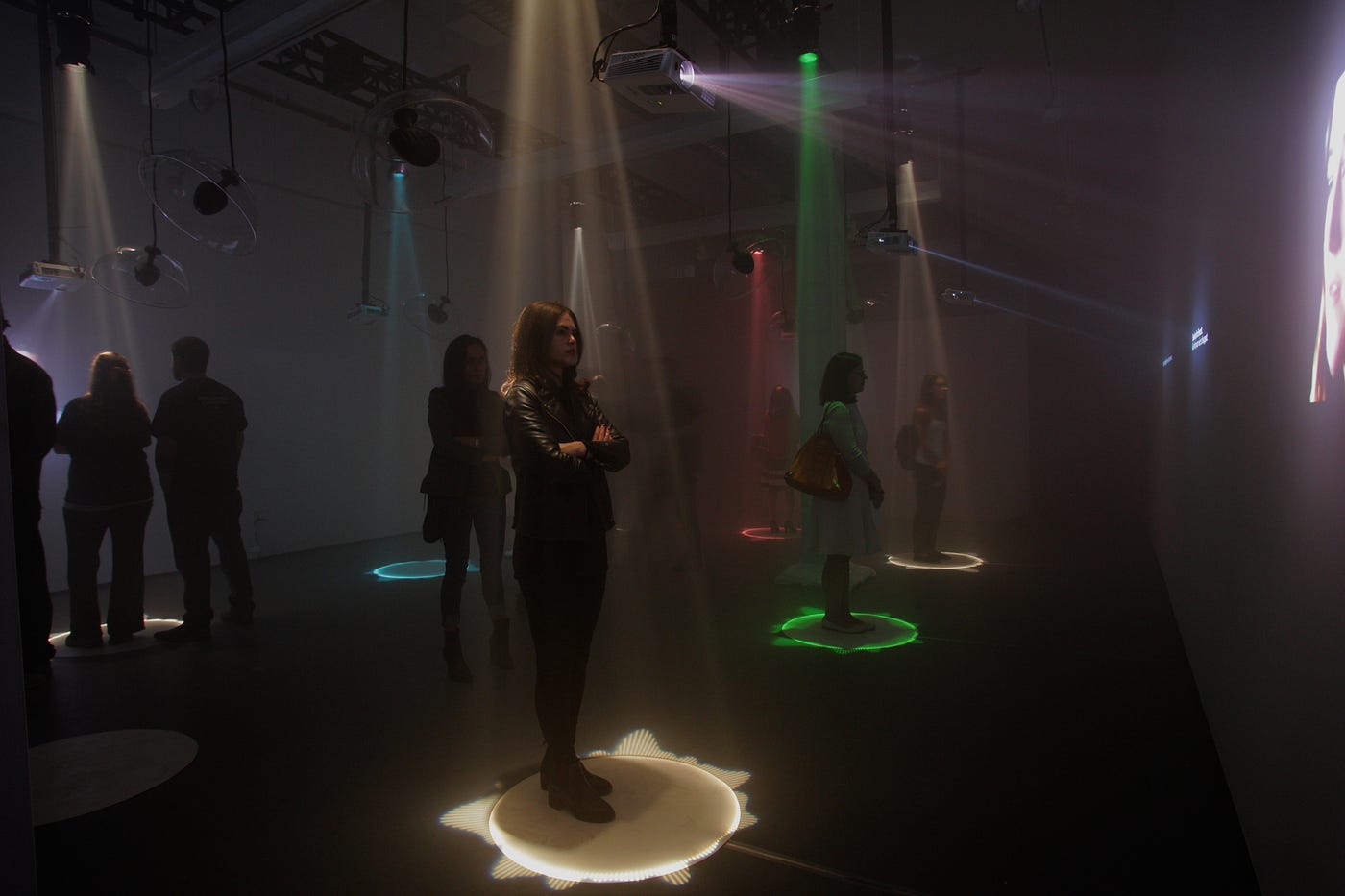Evaluation
My degree Project ‘478’ is an installation I have purposely,
made for viewers to be gradually distracted from their present anxious thoughts
and feelings, as mentioned before I would prefer to have my audience be adults
since they may be coming in after a stressful working day. I have created an
environment, with soft moving sounds generated from the spinning disk and the
wind chimes working alongside each other and swirly fluorescent colours that
luminate the chimes as well. I do hope for the viewers to feel immersed. I also
have the playful furry push buttons that could awaken the audience’s childlike
nature’s and encourage them to further explore the art around; and if children
are around too it is also inclusive for them to view. The name of my artwork is
‘478’ to give recognition to a famous breathing method used to regulate levels of
high stress (Lin et al Kunze, 2020). I did not want to place too much detail in
the name in the hopes that people are intrigued and ask questions about the
name and in turn I would relay suggestive knowledge on the subject; this could
aid making the show more talkative and in hand more interactive. Moreover, I
hope my indirect approach does have a positive impact towards the viewers, this
indirect approach as mentioned in my design proposal was also inspired from
Commandeur and Starmach’s work on their vending machine installation, which in
the end was intended to push more positive reinforcement for the local’s mental
health (Commandeur et al Starmach, 2018). I have distributed my artwork online
on YouTube alongside a tutorial with step-by-step instructions on how to create
the installation, I will also have a physical exhibition and I will just need
to consider my risks on my risk assessment form to make sure I create little to
no hazards for the safety of everyone. Since I have mixed media to assemble.
Overall, this project
was very challenging for me, I did not experiment a lot with Arduinos prior to
this project, but nevertheless I was motivated to create something interactive
in a newer medium, I did initially plan on using conductive paint as a touch
sensor but that failed, although I do wish to further practice with conductive
paint for future projects since learning the process was fun and educative. I
eventually, moved on to work with motors and I’ve also learnt more how to align
code properly and understand why different sections like ‘functions and headers
are so important.
Even though I had a
rough beginning, If I remain consistent and keep experimenting and learning
from others in the same field of interest, I will create some great further
projects in the future.
1)
Lin, Kunze , 2020 AromaCue - A Scent Toolkit To
Cope with Stress using the 4-7-8 Breathing Method
2)
Commandeur , S 2020 Commandeur,Elizabeth.
Starmach, Mark: Intangible Goods. 2018.Sydney
























